Workouts For Seniors Who Want To Regain Their Youth
Exercising is crucial to maintaining a youthful and healthy body. Studies have proven seniors who participate in strength training or working out regularly, build bone and muscle, have stronger immune systems, more efficient lungs, better blood pressure, and have counteracted the weakness that comes with age. Seniors who workout regularly can also ease the symptoms of arthritis, osteoporosis, pulmonary diseases, and Type 2 diabetes. By building strength, seniors will see improvements in their balance, stability, flexibility, and overall quality of life.
A Five To Ten Minute Warm-Up
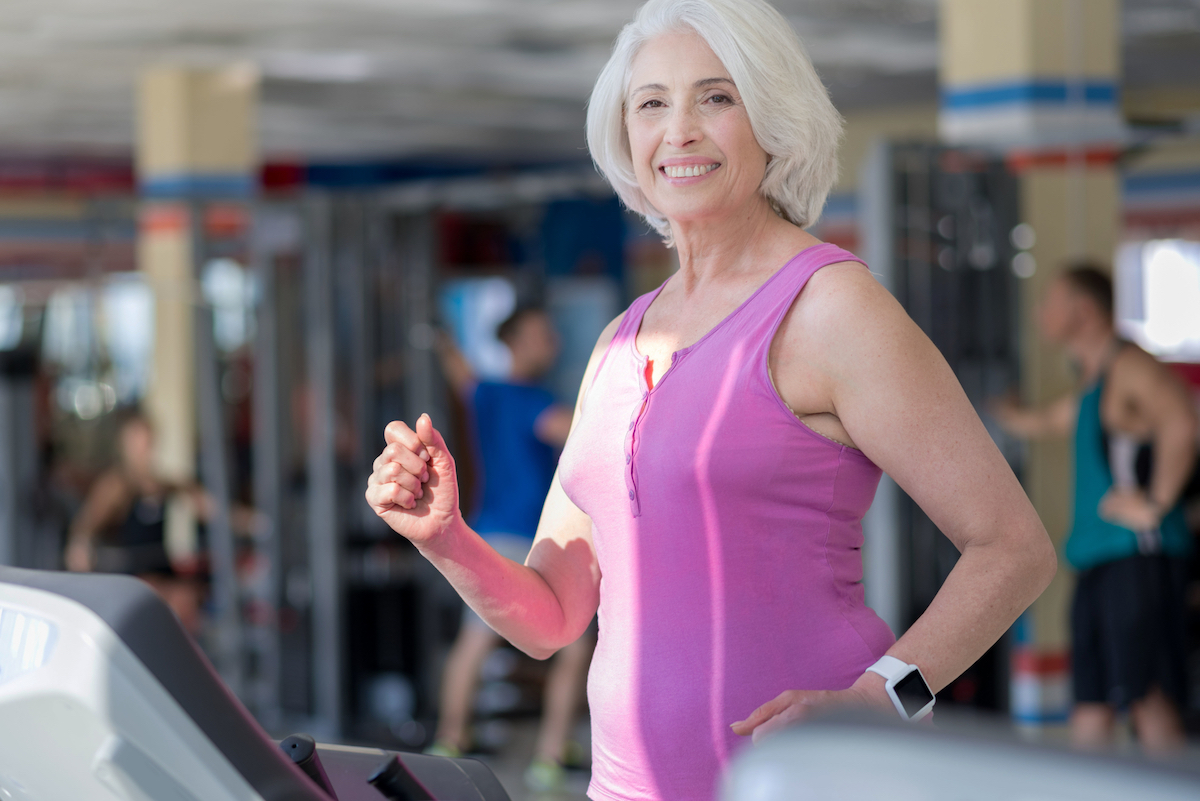
Warming up is the most important part of beginning a workout. Warm up consists of light cardiovascular exercises as well as stretching that increases blood circulation and body temperature, but also protects against injury. At the beginning of your workout, start by walking or lightly jogging in place for five to ten minutes with your arms swinging freely to help remain balanced. If you have limited mobility or if you would rather, you may sit in a chair and begin with chair exercises such as head, arm and shoulder rolls followed by ankle circles and leg extensions. Now that you know how to begin your workout routine, continue reading to learn about how to perform chair squats.
Chair Squats Are A Great Leg Exercise
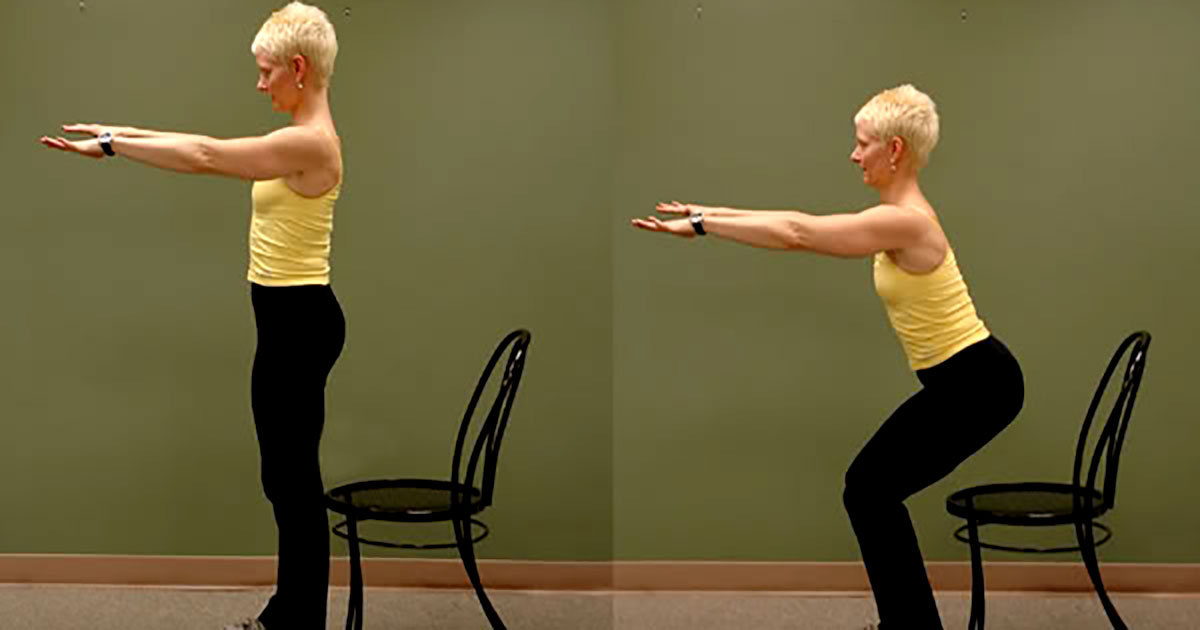
Practicing squats with good form can help build strength and muscle in the thighs, hips, and glutes. To begin, stand in front of a chair with your feet shoulder-width apart. Bend your knees, putting weight on your heels, then stick your hips back and arms straight out to gain better balance. Sit down until you make contact with the chair. As soon as you feel the chair, slowly stand back up. Try to do so without rocking or swaying. Repeat for twelve to fifteen repetitions. To modify the workout to make it easier you can place your hands on your thighs, or if you need the exercise to be a little bit more difficult, do it while holding weights or a medicine ball in your hands.
Do Some Light Wall Push Ups
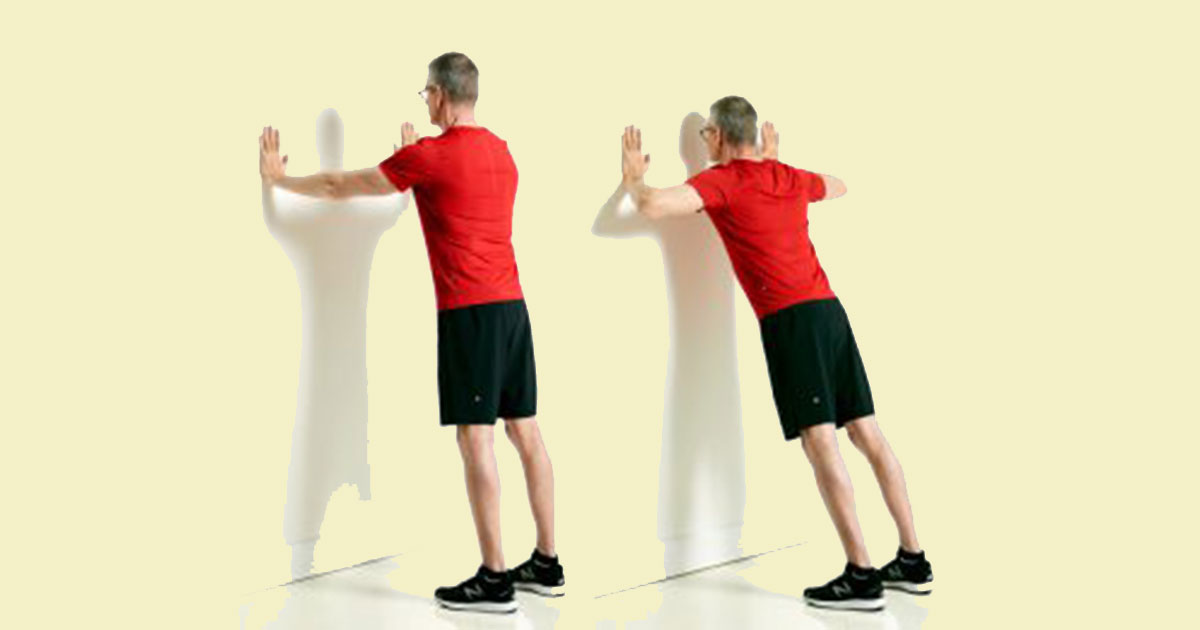
Push-ups work the muscles within your chest, shoulders, and arms, specifically your deltoids, triceps, and pectorals. Doing push-ups against a wall will lower the weight and resistance of gravity, but it will allow for an easier push up with better form. Begin your wall push-ups by standing a few feet from the wall with your feet shoulder-width apart. Place your hands on the wall at chest level, slightly wider than your shoulders. With your back straight, pull your abs in, bend your elbows and lower body to the wall. When your elbows are at a ninety-degree angle, push back to the starting position. Repeat for twelve to fifteen repetitions. As you get more comfortable doing wall push ups, go further from the wall for a higher difficulty. When you are fully satisfied doing fifteen or more wall push-ups, try doing ten to twelve reps on the floor for more resistance and a more intense workout.
Do Step Ups To Build Leg Muscle
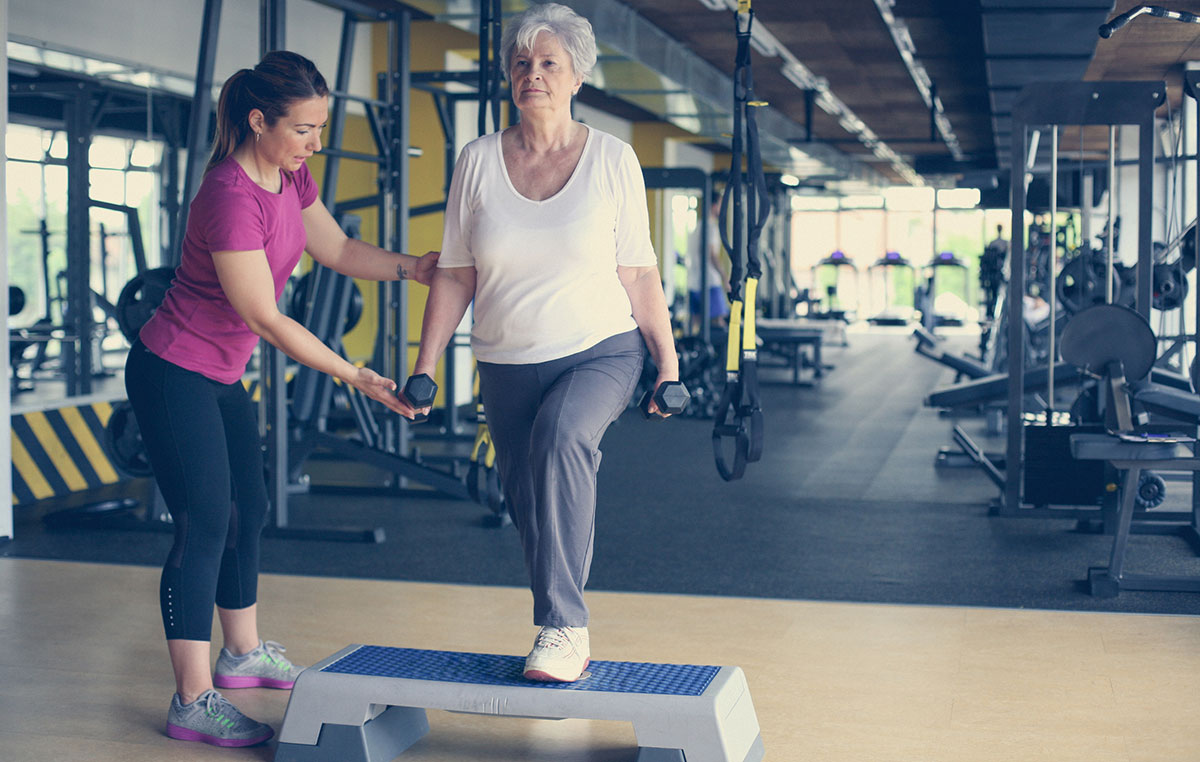
Performing step ups will strengthen the muscles that support the knee. However, if you have issues with your knee, skip this exercise as it can aggravate your knees too much. Begin your step-ups at a staircase with a railing for support if it is needed. Stand on the bottom step and step up with your right foot. Bring your left foot up onto the stair, and then bring it back down to the floor, keeping your right foot on the step for the entire time. Repeat this for twelve to fifteen reps and then switch feet, doing another twelve to fifteen reps with the other foot. Continue reading to find out how to build the strength in your arms.
Do Bicep Curls To Regain Strength
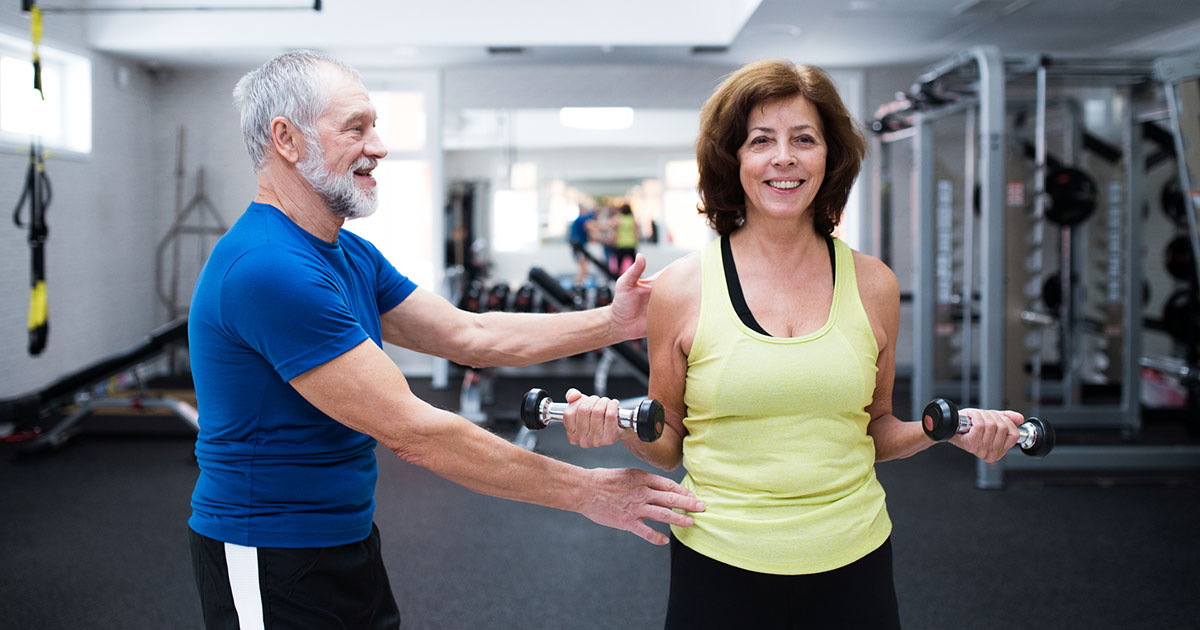
Bicep curls strengthen your biceps, which are muscles you use every day when carrying groceries, opening doors, and anything with a pulling motion. To begin bicep curls, you will want to stand with your feet spread hip-width apart, with a dumbbell in each hand. Suggested starting weights are five to eight pounds. If that does not seem hard enough, begin with eight to fifteen-pound dumbbells.
Begin with your palms facing your thighs. Bring the right dumbbell up, turning your fist towards you while curling the weight towards your shoulder. Hold the weight near your shoulder for two seconds and then slowly lower the weight back down into the beginning stance. Now, curl the weight in your left hand. Repeat this for twelve to fifteen reps.
Knee Lifts With A Medicine Ball
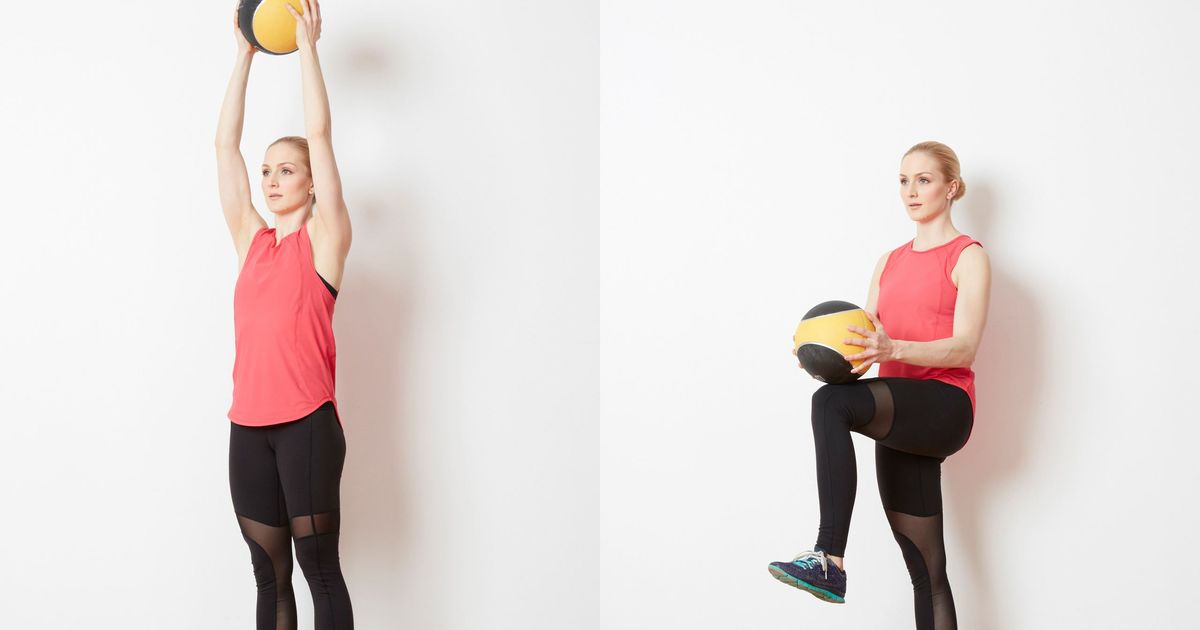
Knee lifts using either a light or heavy weight, such as a medicine ball or dumbbells, is a fantastic way for seniors to work on their upper body endurance as well as their balance and stability. Doing this move is quite simple. First, hold a light weight or medicine ball, about two to five pounds, in both hands right above your head. Then, lift your right knee up to your waist while slowly bringing down your arms and touching the weight or medicine ball to your knee. Lower your knee and return your arms in the starting position with the weight or ball above your head. Repeat these steps for the other knee, alternating sides and continue doing this exercise for thirty to sixty seconds.
If you want to ramp up the intensity, you can speed up your movement while still maintaining control of the weight and your body, while remaining balanced, and lifting your knees as high as possible. To make this exercise easier, you can simply use no weight at all or just hold an appropriate weight at chest level as you lift your knees. If you have knee or back problems, you can avoid the upper body movement of this exercise and just do knee lifts.
Ball Taps
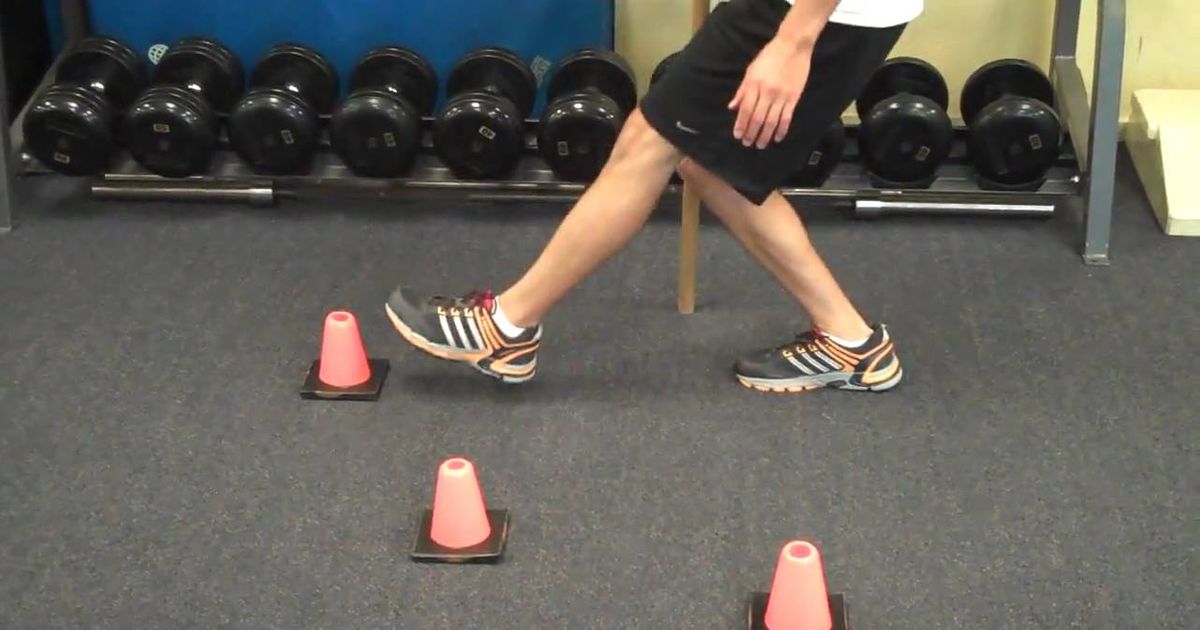
Another great exercise that works the core muscles and builds balance and stability, ball taps can be done while sitting. The first move is to sit in a chair and place a ball in front of your feet. The ball can be small, or it can even be a phone book or another object, as long as it is something you can touch with your foot. Make sure to sit up straight and try your best not to rest against the back of the chair, keeping your back straight and your abs contracted. Then start with your hands behind your head and lift your foot and tap the top of the ball or object. Slowly bring your foot back down to the floor, then switch sides and repeat the same motion with your opposite foot. Alter each foot for all repetitions, and repeat this exercise for thirty to sixty seconds.
Seated Rotations

Seated rotations are another wonderful exercise that works all the muscles of the torso, including the abs and back. To do this easy exercise, begin by sitting on a chair and hold a medicine ball or weight. The suggested weight for women to use is between five and eight pounds, and eight to fifteen pounds for men, however, you can use whatever weight is comfortable for you.
Next, hold the weight at your chest with your shoulders relaxed and elbows out to the sides. Keeping your hips and knees facing forward, rotate the torso to one side as far as you comfortably can, and focus on squeezing the muscles around your waist. Rotate back to center, then repeat the motion on the exercise, keeping your movement slow and controlled. Continue doing this exercise while alternating sides for twelve reps or to how many repetitions you can handle. Remember, one rep is to the right and left.
Go For A Stroll In The Park
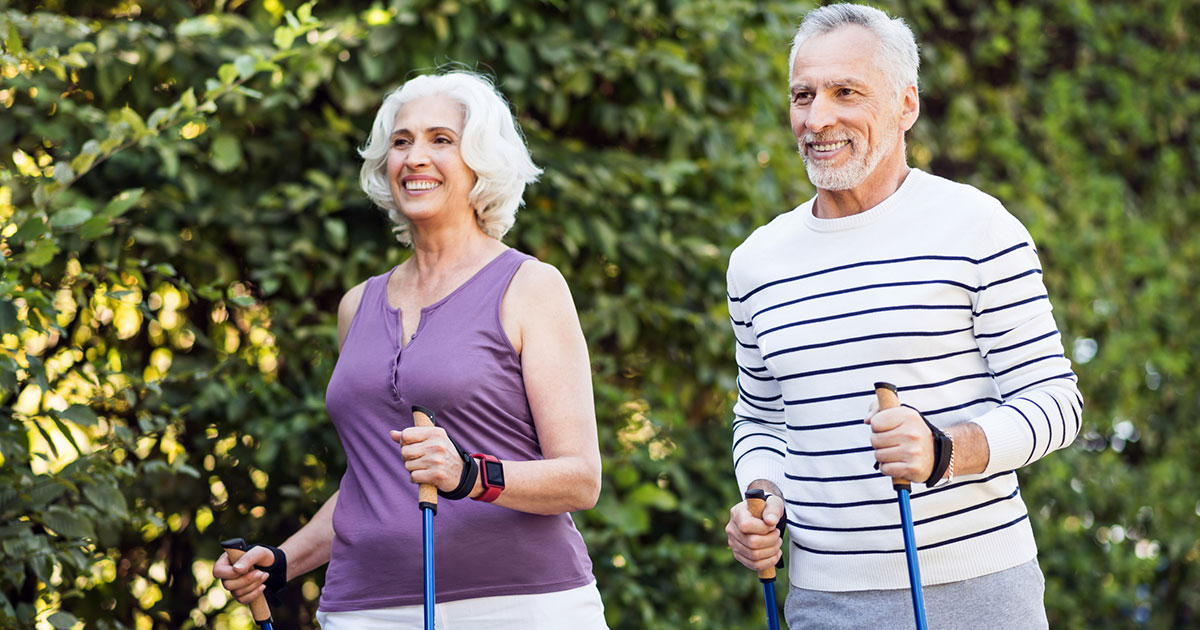
Walking is one of the best exercises for seniors, as there is little planning or equipment needed to do it. To begin your walking routine, you may want to find or invest in a good pair of shoes. Try doing some light stretching before and after your walk to help loosen your muscles and avoid injury. When you begin a walking routine, focus on maintaining proper posture; your back should be straight, and your shoulders rolled back.
Start with a short distance, possibly ten to fifteen minutes and increase your walks by a few minutes each day until you’re walking for thirty to forty-five minutes. By walking every few days, you will begin to notice many benefits such as increased mobility, improved balance and strength, improved flow of oxygen and blood, and you may even notice you lose a few pounds.
Go Swimming For A Full-Body Workout
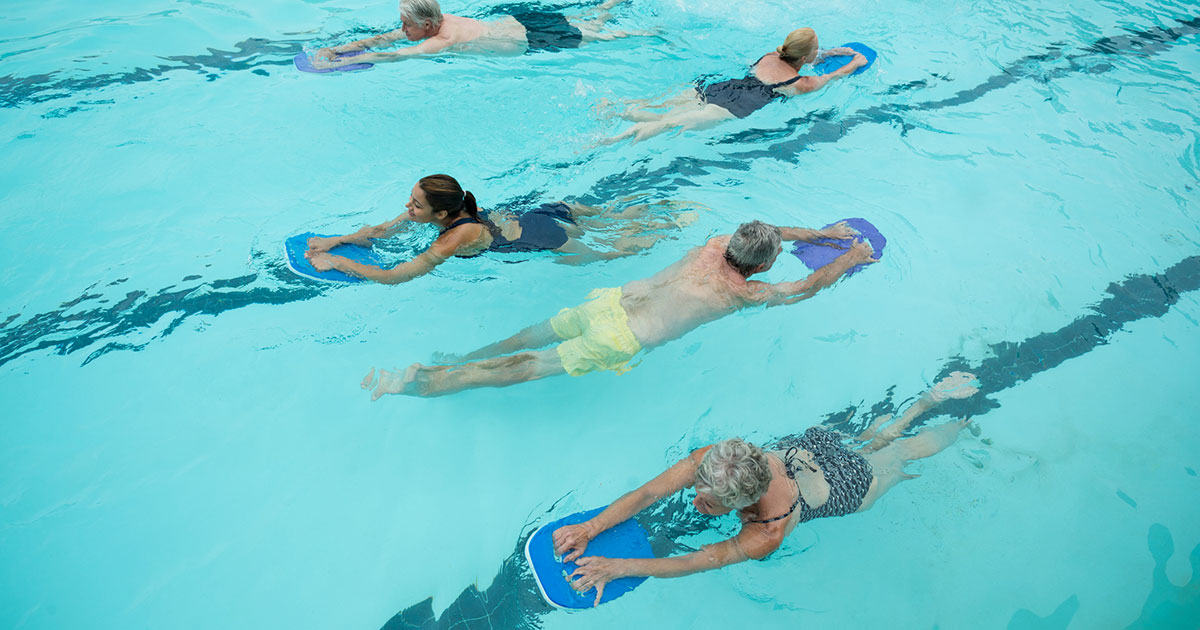
Swimming and water aerobics are amazing exercises to get a full body workout. It helps improve endurance, flexibility, coordination, balance, strength, posture, cardiovascular fitness, and it helps alleviate stress. When you begin swimming, practice doing laps around the pool of whichever stroke feels most natural or the easiest for you. When you get tired, switch up strokes to work other groups of muscles.
During the summer there are plenty of lakes, ponds, and national parks where you can swim, and during the winter you can swim at recreational centers or community centers. Remember to do some light stretching before your swim to warm up your muscles, and after to cool down.